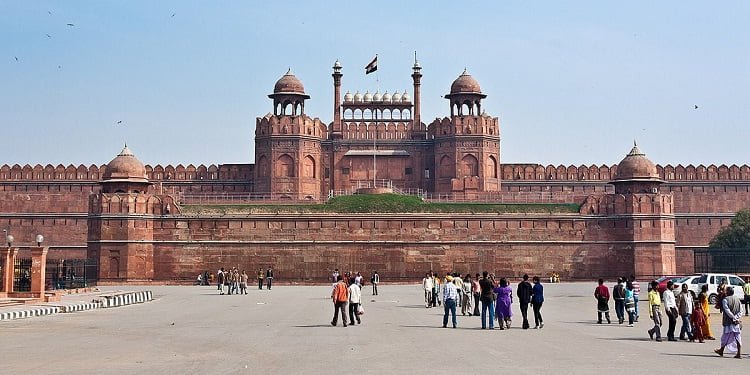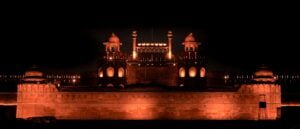The Red Fort: A Majestic Symbol of Mughal Architecture

The Red Fort, also known as Lal Qila, is a historic fort located in the Old Delhi neighborhood of Delhi, India. It holds immense historical significance as it served as the main residence of the Mughal emperors. Commissioned by Emperor Shah Jahan on 12th May 1639, the construction of the Red Fort marked a significant moment when the capital of the Mughal Empire was shifted from Agra to Delhi.
The architectural design of the Red Fort is credited to Ustad Ahmad Lahori, the same architect who constructed the iconic Taj Mahal. Combining elements of Persian palace architecture with Indian traditions, the fort stands as a testament to the peak of Mughal architecture under the reign of Shah Jahan.
Originally adorned with red and white colors, the Red Fort was a visual marvel. However, over the years, it suffered from the ravages of time and various invasions. During Nader Shah’s invasion of the Mughal Empire in 1739, the fort was plundered of its precious artwork and jewels. Subsequently, the British demolished most of the fort’s marble structures following the Indian Rebellion of 1857.
Despite the loss of its intricate artwork, the defensive walls of the Red Fort remained largely intact. The fort was repurposed as a garrison by the British and continued to serve a military function. However, its historical significance was not forgotten.

On 15th August 1947, a momentous day in Indian history, the first Prime Minister of India, Jawaharlal Nehru, raised the Indian flag above the Lahori Gate of the Red Fort. This event marked the country’s independence from British colonial rule. Since then, every year on India’s Independence Day, the Prime Minister hoists the Indian tricolor flag at the fort’s main gate and delivers a nationally broadcast speech from its ramparts using the Public Address System of the Indian Army Corps of Signals.
The Red Fort, with its rich history and cultural significance, was rightfully recognized by UNESCO as a World Heritage Site in 2007 as part of the Red Fort Complex. This designation highlights the fort’s importance not only to India but also to the world as a remarkable architectural masterpiece.
Visitors to the Red Fort today can explore the remaining structures within its walls, including the Diwan-i-Aam (Hall of Public Audience), the Diwan-i-Khas (Hall of Private Audience), and the Rang Mahal (Palace of Colors). These structures offer a glimpse into the opulence and grandeur of the Mughal era.
Stepping into the Red Fort is like stepping back in time, where one can imagine the Mughal emperors walking through its halls and gardens. The fort stands as a symbol of India’s rich cultural heritage and serves as a reminder of the architectural brilliance of the Mughal Empire.
Whether you are a history enthusiast, an architecture lover, or simply curious about India’s past, a visit to the Red Fort is a must. It is a place where the echoes of history can still be heard and where the grandeur of the Mughal Empire can be experienced.
Plan your trip to Delhi and immerse yourself in the magnificence of the Red Fort. Witness the beauty of its remaining structures and feel the weight of history within its walls. The Red Fort is a true gem of India’s architectural heritage and a testament to the greatness of the Mughal Empire.
![]()